In today’s data-driven world, insights should guide every marketing decision – no guesswork; no assumptions. Of course, you can’t predict the future, but you can model it to forecast the outcome of marketing campaigns based on historical data, existing performance and emerging trends.
In this article, we show you how to use marketing forecasting to calculate the outcome of strategies – so you can approve campaigns with the highest chance of success, manage performance to consistently achieve objectives and adapt your marketing spend to maximise return on investment (ROI).
What is a Marketing Forecast
A marketing forecast is a process that uses historic data and expectations to predict future performance. This information, along with market research, can be used to make larger business decisions. This could be predicting future sales, different growth targets, or other key performance measurements.
What are we looking at in this article?
In this article, we explain the 10 key steps of marketing forecasting so you can get accurate outcomes from simulations on a consistent basis. This will allow you to predict the outcome of campaign ideas and prioritise creatives that’ll achieve your goals most effectively.
Here are the steps we’ll be looking at in this article:
- Defining goals: How to define marketing goals for reliable forecasts.
- KPIs & metrics: Choosing the right data points to measure success.
- Budgets: Setting and allocating budgets.
- Campaign ideas: Creating campaign ideas for each marketing goal.
- Expenses: Accounting for all of your marketing expenses.
- Forecasts: Choose the best campaign ideas by forecasting results.
- Campaign approval: Approve and run the campaigns that perform best in forecasting.
- Milestones: Keep campaigns on track with milestones.
- Reforecasting: Run regular forecasts on live campaigns to adapt expectations.
- Adaptation: Adjust budgets, targets and resources to maximise ROI.
By following these steps, you’ll implement forecasting throughout the strategic planning, prioritisation and optimisation of campaigns so that your budget is always allocated to strike the best balance between high performance and cost-effectiveness.
Before we get into the 10 steps, we’re going to quickly answer the following two questions:
- What is marketing forecasting and why is it important?
- What tools do I need for marketing forecasting?
This way, you’ve got everything you need to start following the steps laid out in this article to implement an effective marketing forecasting process into your organisation.
What is marketing forecasting & why is it important?
Marketing forecasting is a data-driven approach to predicting the outcome of marketing activities. If I type the question “what is marketing forecasting into Google, I get the following answer in a featured snippet:
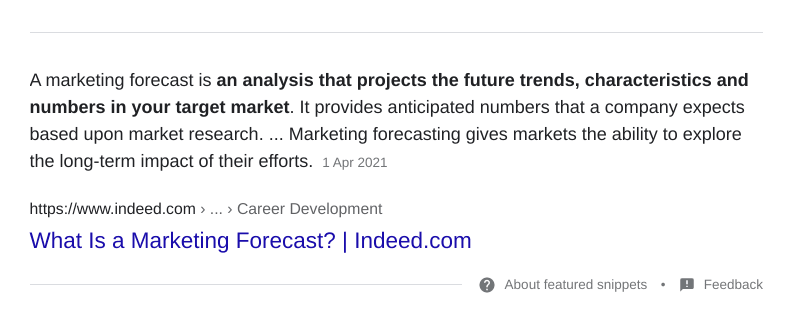
“A marketing forecast is an analysis that projects the future trends, characteristics and numbers in your target market. It provides anticipated numbers that a company expects based upon market research.”
The purpose of marketing forecasting is to remove the guesswork from business decisions, allowing you to predict future outcomes. You can forecast a wide range of scenarios, depending on the data you’re working with – for example, you could predict future campaign performance, the growth rate of your business or the impact of external trends.
Marketing forecasting typically uses both first-party and third-party data to calculate outcomes:
- First-party data: This is the data you collect from your own website, customers and channels.
- Third-party data: External data you access from other sources – eg: government statistics, Google Trends, etc.
For example, a company might access third-party data from The Met Office to understand how weather patterns affect the purchase habits of their target audience. They can then use this data to inform seasonal campaigns or even short-term marketing decisions, such as increasing spend on campaigns based on the weekend’s weather forecast.
For the purposes of this article, we’re going to keep things simple and focus on the use of first-party data to predict one type of outcome: the performance of campaign ideas. This means we’ll be working with the data you should already have access to and control over – namely the performance of your existing campaigns.
So you’ll be taking matrics like conversion rates, visits, impressions and using these to predict the outcome of similar campaign ideas while getting a clear picture of which objectives you need to hit to achieve your goals.
What tools do I need for marketing forecasting?
To follow the steps, you’ll need the following three tools to capture the necessary data, run your forecasts and optimise campaigns to improve performance:
- Marketing analytics: Capture all of the data you need to forecast, measure performance and optimise campaigns.
- Forecasting software: Simulate campaigns to forecast results and choose the most effective campaign ideas.
- CRO software: Optimise campaigns, test variations and deploy changes.
In addition to these, you’ll also need the tools required to manage campaigns and create all the resources they require – things like email marketing software, a landing page builder, etc. We’re not going to get into any of that in this article, so we’re only interested in the three tools you need to run marketing forecasts successfully on a regular basis.
Marketing analytics
To run forecasts, you have to feed the right data into your simulator and this is where your marketing analytics software takes the lead. If you’re simply tracking the performance of your website, Google Analytics is more than capable enough to collect the necessary data for predicting campaign performance.
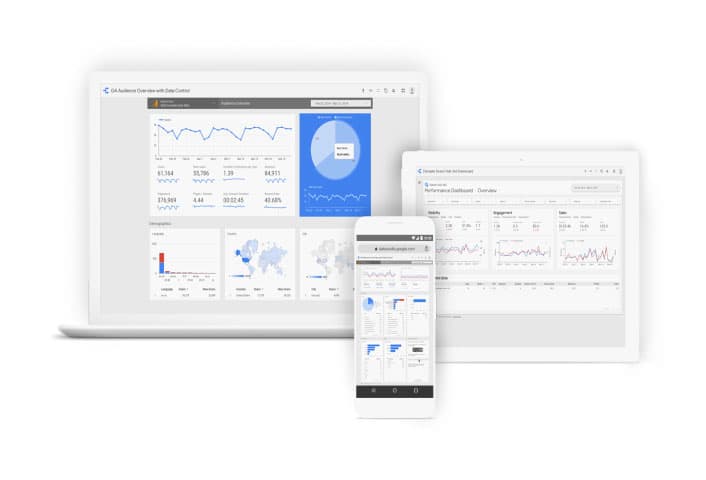
If you also need to include data from your software product, then you might want to look at other options. While you can set up Google Analytics for collecting insights from products, it involves quite a lot of work when there are dedicated analytics systems available for product optimisation, such as Mixpanel.
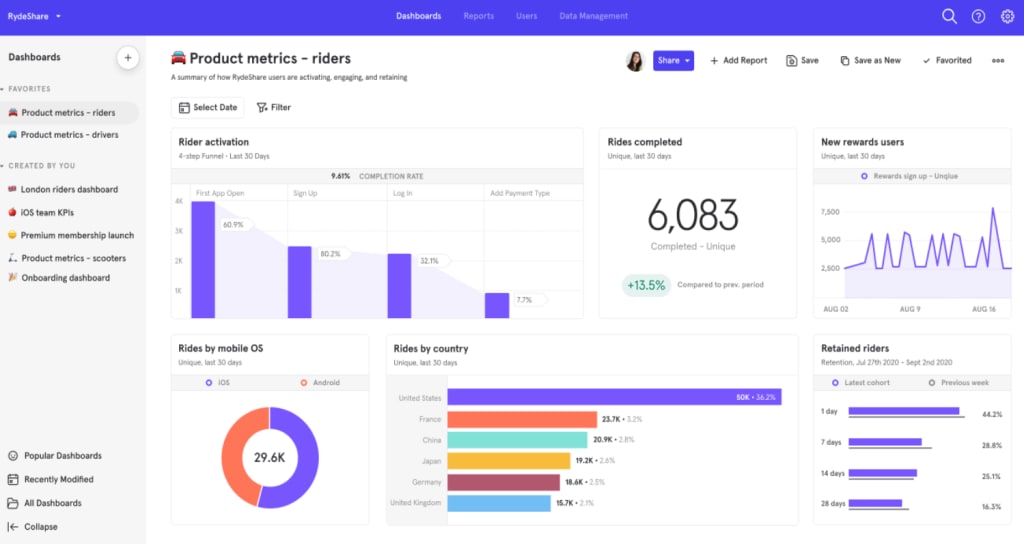
If not sure which analytics system is best for your needs, we take a look at the best options currently available in our comparison for CRO and analytics software tools for SaaS companies.
Forecasting software
With analytics software, you’re spoilt for choice but marketing forecasting tools are in much shorter supply. There are some platforms currently available on the market but they’re mostly included in enterprise analytics systems that cost hundreds of thousands of dollars.
Unfortunately, there aren’t many scalable options designed for startups and new companies that offer affordable entry prices and grow with your business.
TrueNorth is the exception, a marketing management platform that acts as the control centre for all of your planning, deployment and optimisation. TrueNorth includes a marketing forecasting system that predicts the performance of campaign ideas before you start investing any resources into creatives that fall short of your goals. This means you can test run campaign ideas, ensure they’re ready to achieve your goals and prioritise the campaigns that perform best.
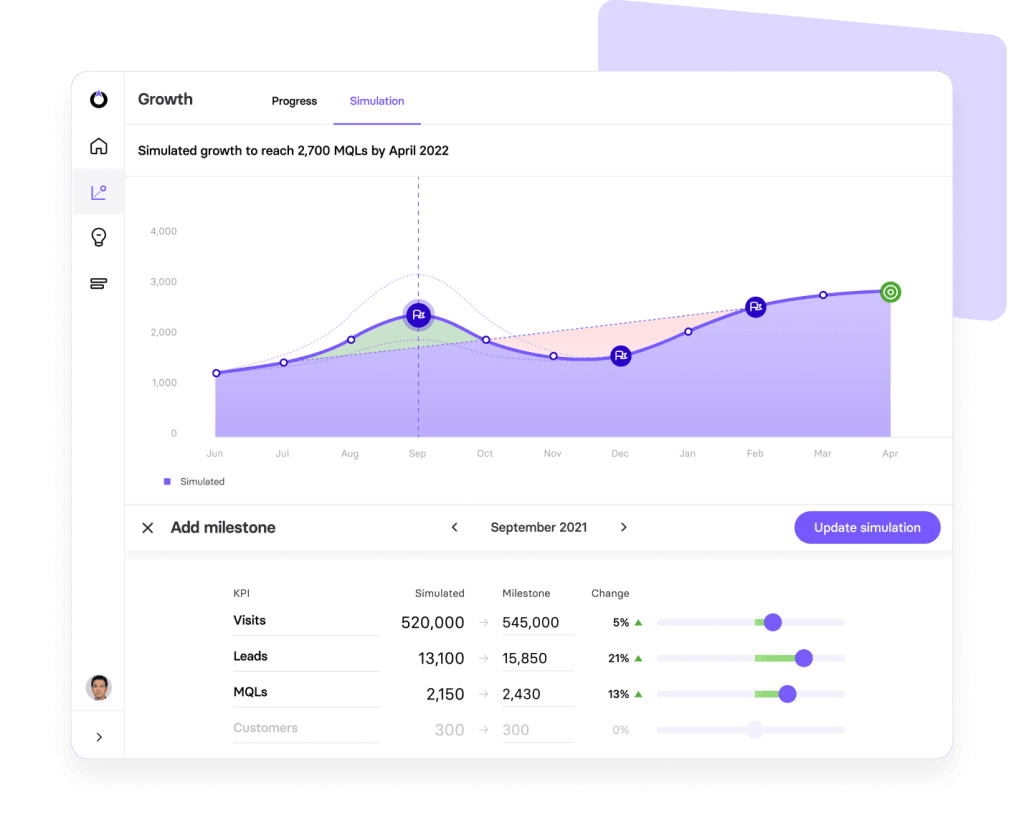
TrueNorth allows you to test campaign ideas to see what works before you put any resources on the line. The platform helps you set achievable marketing goals and test multiple campaign ideas to see which creatives give you the best return for your marketing spend. For example, you can set a goal of increasing marketing qualified leads (MQLs) by 115% by the start of April 2022 and simulate campaign ideas to achieve this. TrueNorth shows you which objectives you’ll need to complete along the way (visits, conversions, leads, etc.) to achieve this goal with performance breakdowns for every month.
This shows you the monthly targets you need to hit to achieve bigger goals and you can also set milestones where you need to achieve better results than the simulator forecasts, based on your current performance. This means you can identify areas where your campaigns are going to fall short of your needs and test new campaign ideas or optimise your existing ones to make up the difference.
CRO software
The final tool you’re going to need to follow the steps in this article is conversion rate optimisation (CRO) software for optimising campaigns and deploying changes. We’re not going to go into too much detail about optimisation in this article but conversion optimisation is crucial for ongoing forecasting, which allows you to constantly reassess performance and make adjustments to achieve more ambitious goals and maximise ROI.
There are plenty of CRO platforms on the market for every budget and VWO makes a regular appearance in our recommendation articles.
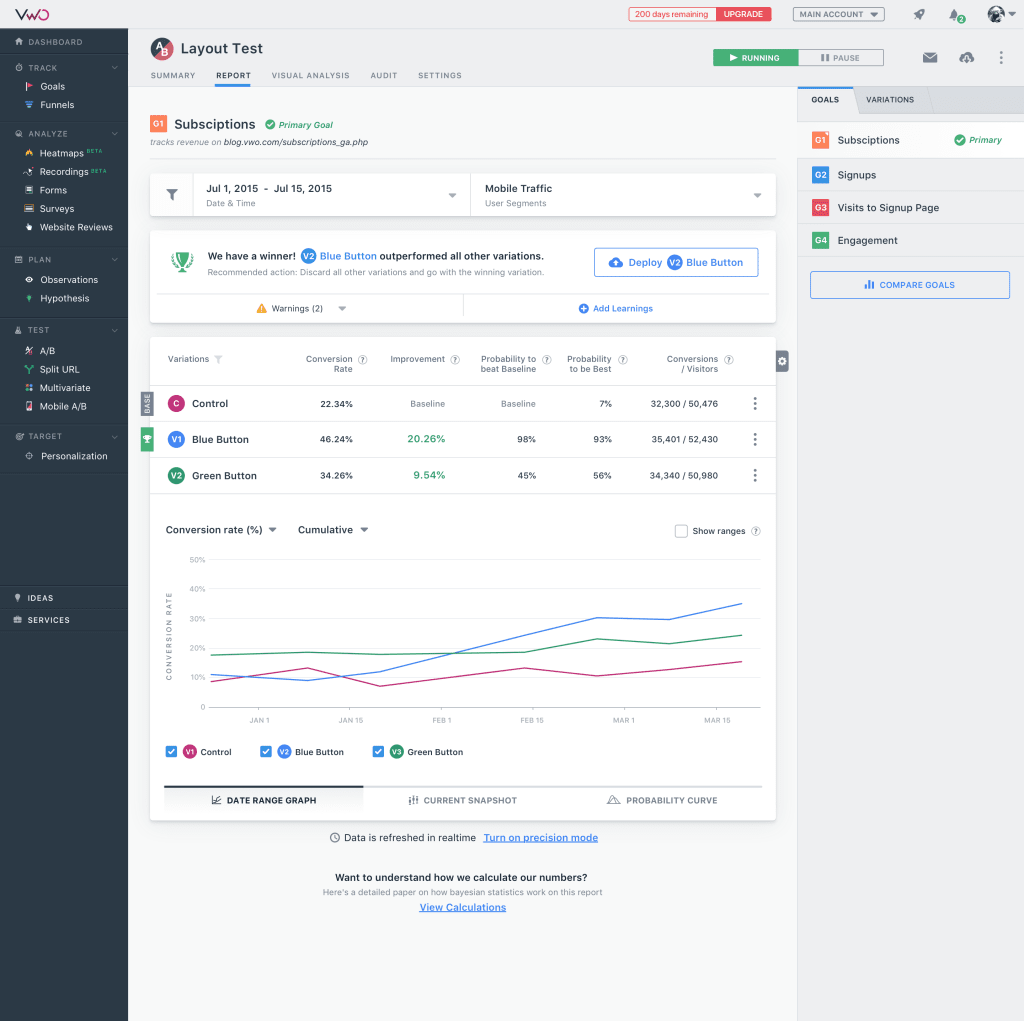
With VWO, you have separate products for optimising websites and software products so you can use either or both, depending on your needs. In our experience, VWO provides the best balance of quality, depth of features and value/affordability. It sits on that line between enterprise-grade software and products designed for growing businesses, which is reflected in the pricing and the intuitive experience.
Again, you’ll find plenty of other recommendations in our comparison of the top CRO software for SaaS companies – so take a good look at those if you don’t already have a quality CRO platform on your side.
#1: Define your marketing goals properly
Effective forecasting starts with setting specific, measurable marketing goals. We’ve covered this topic in several posts before and our CEO Marcus Taylor sums up the importance of defining marketing goals properly as well as anyone:
“If you’re not crystal clear on what your business goal is – stop. Trying to do marketing without a clear goal is like starting a race without knowing where the finish line is.“
A Marketing Plan for Agile Marketers; Venture Harbour CEO, Marcus Taylor.
Forecasting helps you find the most efficient route to the finishing but you still need to determine where that line is by setting clear marketing goals. Before we get into the how of marketing goals, let’s quickly clear up some of the confusion about the terminology of goals vs objectives (this is important with forecasting and marketing in general).
As we explain in our ultimate guide to marketing strategy, goals and objectives are often used interchangeably by marketers but they play two very different (and important) roles.
Marketing goals vs marketing objectives
Before we go any further, here’s a quick couple of quick explanations of marketing goals and marketing objectives:
- A marketing goal is a broad, long-term result you want to achieve, such as increasing revenue, reducing customer churn, increasing engagement by 40%, etc.
- A marketing objective defines the specific, measurable actions marketers must complete to achieve specific goals. For example, if your goal is to reduce customer churn, one objective might be to increase email open rates by 30+%.
If we stick with the analogy of racing, then your marketing goal is the target you set for the finish line – your goal for the entire race. Maybe you want to complete the race in a certain time, improve your speed by 3.5% or improve a specific aspect of the race, such as speeding up the start phase. This is comparable to a company setting campaign goals for hitting certain revenue targets, increasing conversion rates or generating more leads.
Marketing objectives are more like the targets you set for individual laps that will keep you on track for achieving the goal of the race. You might set time targets for each lap, allow for a slower time in the penultimate lap and push for a final sprint in the final one – whatever it takes to give you the best chance of achieving your goal for the race.
Likewise, a company might set revenue targets for every month or quarter, allow for an autumn slump and then go all-in for the Christmas rush.
If the marketing goal is to increase conversion rates, you might set objectives to maintain or increase traffic volumes, generate more leads, increase the percentage of marketing qualified leads (MQLs) and improve the closing ratio of your sales team.
How to set marketing goals
In our ultimate guide to marketing strategy, we also explain how to set marketing goals properly. There are plenty of frameworks you can follow for setting marketing goals but the key essentials are that they should always be specific, measurable and achievable.
Specific goals should always be time-bound, too, and you’ve probably come across the acronym for SMART goals:
- Specific
- Measurable
- Achievable
- Relevant
- Time-bound
As I’ve said in the past, I find relevance to be a little vague and open to interpretation but there’s no room for debate over marketing goals being specific, measurable, achievable and time-bound.
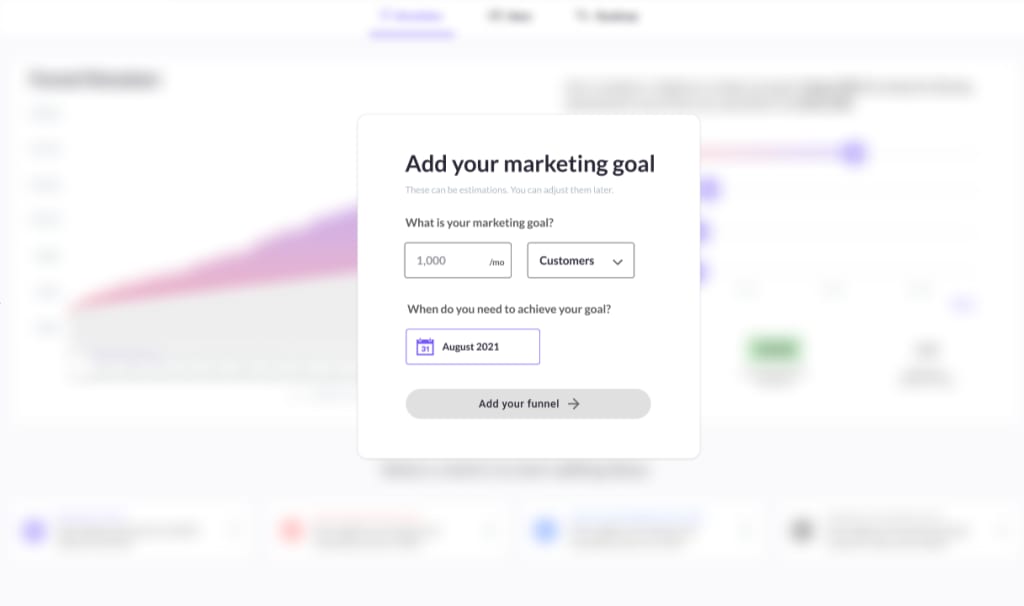
Let’s say we define the goal of increasing conversion rates by 150%, on average, across all marketing channels by the end of Q4 2022.
Here’s how that stacks up against the SMART framework:
- Specific: Increase avg. conversion rates by 150% across all channels, from 1.4% to 3.5%.
- Measurable: The sum of avg. conversion rates across all channels divided by the total number of channels.
- Achievable: The target of 150% has been set based on current conversion rates, available resources and forecasting.
- Relevant: Conversion lift increases total revenue for 2022 and even more so for following years.
- Time-bound: Target must be achieved by end of Q4 2022.
If your marketing goals fail to satisfy any of these criteria, then you’re going to have problems with forecasting and marketing analytics in general. Your goals inform everything you do, starting from the strategic planning of campaign ideas, to measuring performance, forecasting results and attributing success/failure throughout ongoing optimisation.
#2: Select the right KPIs & metrics
Your forecasting system is only as good as the data you feed into it and this relies on you choosing the right KPIs and metrics to measure campaign performance and track goal completions. Much like goals and objectives, you’ll find the terms KPI and metric are often used interchangeably but, once again, they’re two different things with specific and important distinctions.
So let’s start by clarifying this point.
Marketing KPIs vs marketing metrics
As we explain in our list of essential metrics and KPIs for SaaS marketers, everyone working with data should understand the difference between metrics and KPIs.
Here’s a quick summary of the two:
- KPIs: Data points that measure the success or failure of your primary business and marketing goals.
- Metrics: Data points that provide more context behind the reason for failure or success.
To expand upon this, every key performance indicator (KPI) is a metric but not every metric is a KPI so we’re talking about a specific type of metric – and all the clues you need are in the name. Metrics are any data point relevant to your analysis but KPIs are the most important measurements of performance and these are directly aligned with your marketing goals.
So, if your campaign goal is to increase marketing qualified leads (MQLs), then MQLs is the KPI that determines success or failure.

Everything else is merely a metric that provides more context behind the success or failure of your campaign, allowing you to gain deeper insights into campaign performance so you can see what’s working, what isn’t and improve results.
In most cases, your campaign goal will align exactly with your primary KPI although it’s quite common to have multiple KPIs for one goal. For example, if your goal is to hit a certain revenue target, then revenue is the obvious KPI but you’ll also want to look at other key performance indicators, such as profit, to ensure that you’re not simply overspending to generate more income.
If you need more information on marketing KPIs and metrics – especially the more general marketing data points, as opposed to SaaS-specific ones – take a look at this guide to marketing metrics from our CEO, Marcus Taylor.
#3: Set & allocate your budget
Setting budgets is a crucial part of marketing planning and it’s also essential for accurate forecasting. Budget allocation is a key variable in forecasting campaigns, optimising performance and predicting outcomes as you tweak budget allocation to find the best ROI across the board.
As Marcus explains in his ultimate marketing plan, there are two common ways marketers determine how much to spend on campaigns:
- Benchmark budgets: Where businesses set aside a fixed percentage of revenue (e.g.: 7-15%) as their marketing budget.
- Goal-based budgets: Where your marketing goals determine a workable strategy for achieving them and assign the necessary budget to make it happen.
While the first approach is more traditional and many marketers still use it, the second approach of setting goal-based budgets is far more effective in today’s world of data-driven insights. Why blindly throw an arbitrary figure at marketing campaigns when you can take a more calculated approach to setting budgets – one that’s designed to get results?
“The problem is that it’s not based on achieving an objective. Spending 12% of revenue on marketing every month may seem reasonable, but it may only be enough to keep up with your competitors if they’re also doing the same. It may even lead to losing market share, especially if your competitors are using the following approach.”
Marcus Taylor, Venture Harbour CEO
Certainly, when it comes to marketing forecasting, you have to set goal-based budgets so we’re only interested in this approach for the purposes of this article.
In his marketing plan, Marcus offers the following example of goal-based budgeting:
Let’s say the business wants to grow by $500,000 revenue in 12 months.
If each customer brings in $2,000, then you need 250 new customers. This means, your breakeven marketing budget would be $500k (acquire 250 customers @ $2k each).
If you aim for a gross profit target of 50%, then your marketing budget is $250k and you have a target acquisition cost of $1,000. From here you can work out how many leads, demos, or clicks you’ll need to acquire one customer giving you a target cost per lead, cost per click etc.
With a budget of $250k and a target acquisition cost of $1,000, you can start coming up with campaign ideas that will achieve your growth target within those means (ie: achieve your objectives) and this sets us up perfectly for step #4.
#4: Create your campaign ideas
With your goals defined and budgets set, you’re ready to start putting campaign ideas together that you’ll run through the simulator to forecast results. Your marketing goals should always guide campaign ideation while budget informs how much financial investment you can allocate to each campaign – the question is, can you get the results you need from the campaign ideas and budget you have available?
Luckily, marketing forecasting can help you answer this question for each campaign idea.
First, though, we need to come up with ideas and this always starts with the marketing goal. So let’s say you want to increase conversion rates on a specific landing page that’s already getting decent results but you suspect could perform even better.
Your SMART goal might look something like this:
- Specific: Increase conversion rates from 3.1% to 5+%
- Measurable: Conversion rates (KPI) while also tracking traffic volume, bounce rate, loading times, etc.
- Achievable: Your analytics suggests improving loading times, reducing bounce rates, increasing CTA views and improving the relevance/quality of traffic makes a 2.9+% increase achievable.
- Relevant: A conversion lift from this landing page will generate an additional $90,000 in annual revenue (+61%).
- Time-bound: Achieve 5+% conversion rate by end of 2022
So you know exactly what you need to achieve and your analytics already reveals plenty of room for improvement, which guides your campaign ideas. From here, you can start setting objectives, such as:
- Reduce loading times: Optimise the landing page to reduce loading times to 2.5 seconds or under.
- Reduce bounce rate: Maintain or increase traffic volume while reducing bounce rate on the landing page in question.
- Increase CTR impressions: Increase the percentage of landing page visitors who see the calls-to-action for your primary conversion goal.
- Test landing page copy: A/B test landing page copy variations to find the most effective message.
- Increase traffic quality: Increase the purchase intent of website visitors while maintaining or increasing traffic volume.
With these five objectives, the first three are easy to measure with single KPIs so it makes sense to start with these before you get onto the more subjective challenges of increasing traffic quality and improving landing page copy. This is important because testing landing page copy while you’re reducing loading times will make it impossible to know whether the copy is having an impact or if it’s all to do with faster page speed.
In this case, you should also anticipate that reducing loading times will have a direct impact on bounce rates and CTR impressions – so this is the logical objective to start with. And, the great thing about loading times is there’s no ambiguity. It’s all about reducing server requests, optimising file sizes, ensuring your server speeds are fast enough, etc.
As you optimise page speed, keep a constant eye on conversion rates to view the impact and also monitor bounce rates, CTR impressions and the other metrics you’ve identified.
Hopefully, you should see a reduction in bounce rates and an increase in CTR impression as a result of faster loading times. But, now, you might want to come up with campaign ideas to optimise these metrics further. This is where you start to see a lot of overlap due to the close relation of these metrics and some of the optimisation techniques required.
For example, to increase CTR impressions, you might come up with the following ideas:
- Reduce bounce rate
- Increase time-on-page
- Move first CTA above the fold
- Move second CTA higher up the page
- Condense landing page copy – make it more concise, to the point and reduce vertical scrolling
- Increase emphasis on benefits in copy (encourage scrolling)
- Test hero copy to encourage page scroll
Keep in mind that moving CTAs above the fold will max impressions at 100% so you don’t gain anything by measuring this – use conversion rates to measure the impact of this if you choose to place your first CTA in the hero section and measure impressions of your second CTA.
The most ambitious objective we touched on above is increasing the quality of traffic. For these ambitious objectives, marketing forecasting is especially important because you’re coming up with campaign ideas that have a more indirect impact on metrics and KPIs. For example, you’re creating new ad campaigns to generate traffic to your landing pages, new content marketing campaigns to promote your page in organic search and outreach opportunities to generate traffic from relevant third-party sites.
#5: Know your expenses (all of them)
To get accurate marketing forecasts, you must account for all expenses relevant to each campaign. The mistake a lot of companies and marketers make is overlooking expenses and underestimating the true cost of achieving the results they forecast. You have to include every expense, including wages, fees and the cost of producing resources – any cost that has an impact on achieving your goals within the specified time frame.
It’s no good coming up with an epic content marketing campaign if you don’t have the funds to create the epic content required.
Take a look at our guide to marketing budgets for a breakdown of how to set budgets, step-by-step. HubSpot also has a solid guide on managing marketing budgets that reinforces the importance of considering all of the costs involved with creating, running and optimising a campaign, including the following:
- Software: When it comes to digital and even print media, you may need software to create your marketing campaigns, or handle your daily processes.
- Freelancers: If you have a temporary campaign or want to test out a new marketing strategy, you might want to hire a short term freelancer before bringing on a full-timer.
- New personnel: When you do hire full-time employees, you’ll want to budget costs including their computer, technology, benefits, and onboarding-related needs.
- Advertising: Budget how much money you’ll spend on paid opportunities such as physical ads, native ads, sponsored content, search engine ads, and social media promotions.
- Content creation: When you create content such as videos, photos, or even blog posts, you’ll need to put paid time into it. Budget how much money will go into creating this content so you can adjust accordingly based on its return on investment.
In the same article, HubSpot’s VP of Marketing Meghan Keaney Anderson raises another good point on some of the expenses many companies overlook:
“When people allocate budget for product marketing, they tend to think in terms of product launches and promotional activities. That’s certainly an important part of it, but another area of focus to remember is setting aside resources to conduct research and message testing long before the product ever goes to market.”
Make sure you include all of the relevant costs in any marketing forecast to ensure you have the funds and resources available to hit the projected targets – otherwise, you’ll fall short of expectations.
#6: Forecast your campaign ideas
With your goals, budgets and campaign ideas defined, you’re ready to simulate each campaign to forecast the results. If you’re using TrueNorth, you can easily add a new campaign by clicking the Add Campaign button on the top-right of the main navigation and specify your goals, budget, metrics and timeline.
Next, you can run the TrueNorth simulator to forecast the results of each campaign and compare performance.
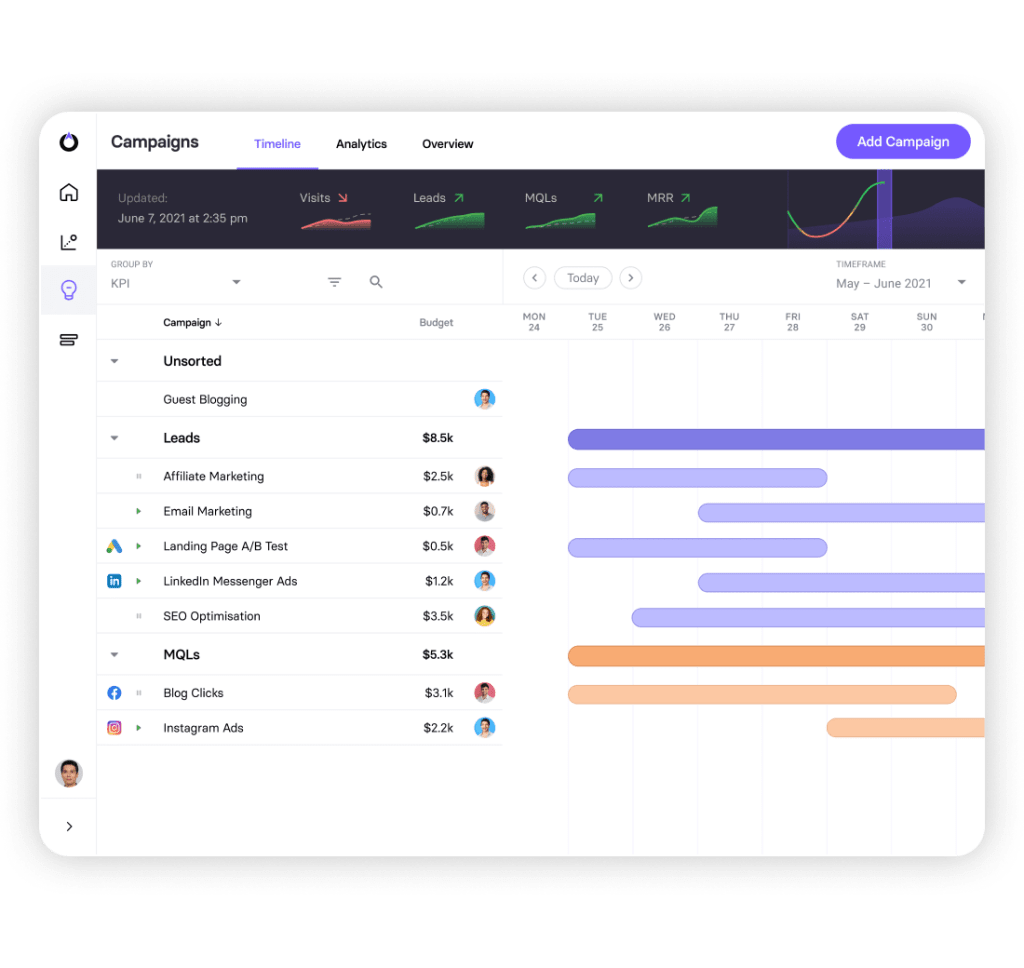
This allows you to compare the results of campaign ideas and gain an overview of which strategies should achieve your goal in the most effective manner. You can see which campaigns are likely to fall short of targets, which ones are on course to achieve results and which campaign ideas are worth refining to improve projections.
For example, you might see certain campaigns are expected to gain early traction but taper off before achieving any sustainable results. Likewise, you might see other campaigns are forecast to start off slow with negative ROI for the first few months but build momentum over the following months that justifies the initial expense.
In TrueNorth’s campaign simulator, you can also edit the parameters of your forecast to change the projected results.
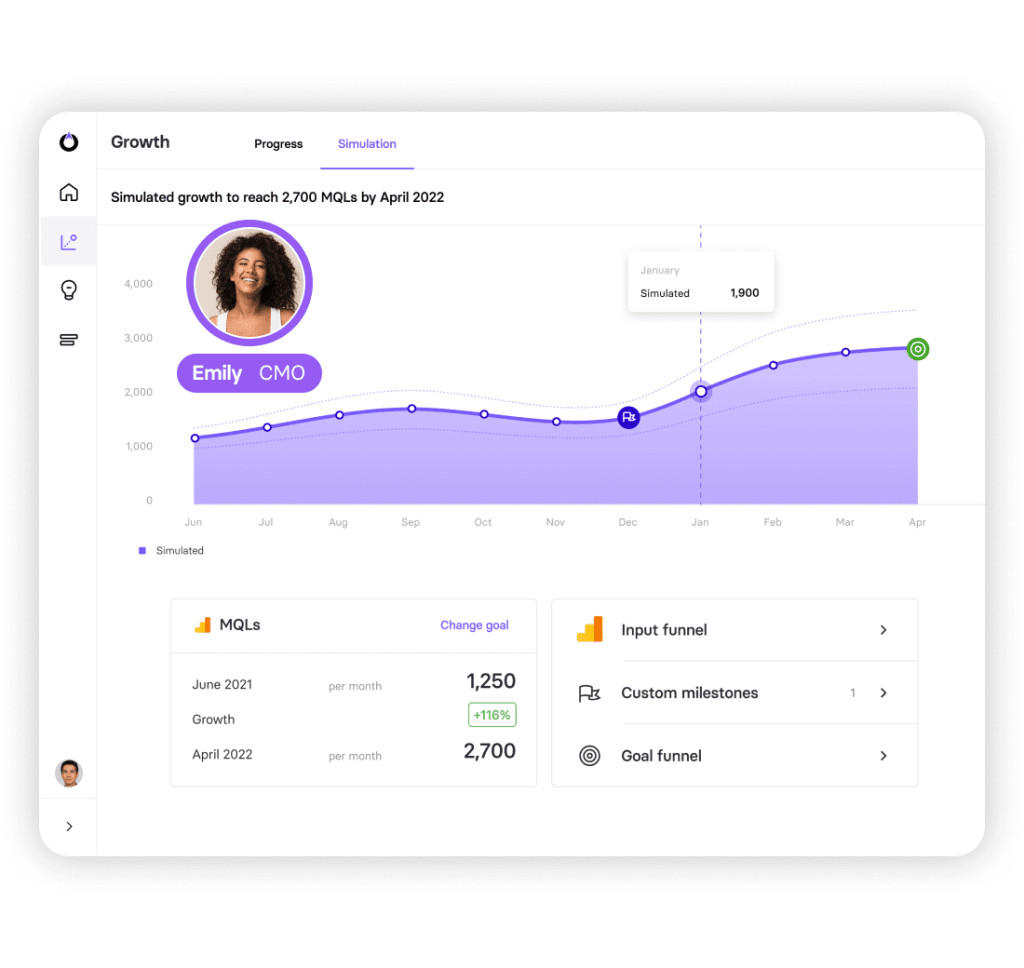
So, if one of your campaigns doesn’t quite hit your goal in your set time frame, you can check how much you would need to increase the budget to hit your target. You can also see which objectives you would need to revise, such as increasing traffic or conversion rates to achieve your goal in the time frame without increasing the budget. This gives you the flexibility to play around with campaign settings and objectives to understand what you need to do to achieve your marketing goals – and decide whether these requirements are feasible.
#7: Approve winning campaign ideas
Once your campaigns are simulated, you can approve winning briefs and prioritise them based on their results and deliverability. In TrueNorth, campaign results are scored out of 100, making it easy to prioritise campaigns and these scores are calculated from the projected impact, confidence and ease of achieving the campaign goal.
The idea is to strike the ideal balance between campaign effectiveness and the ease of achieving results so you can maximise the return on investment (ROI) and other resources available. You can also use this to prioritise campaigns based on achieving bigger results in a shorter time frame – ie: your high-impact campaign ideas.
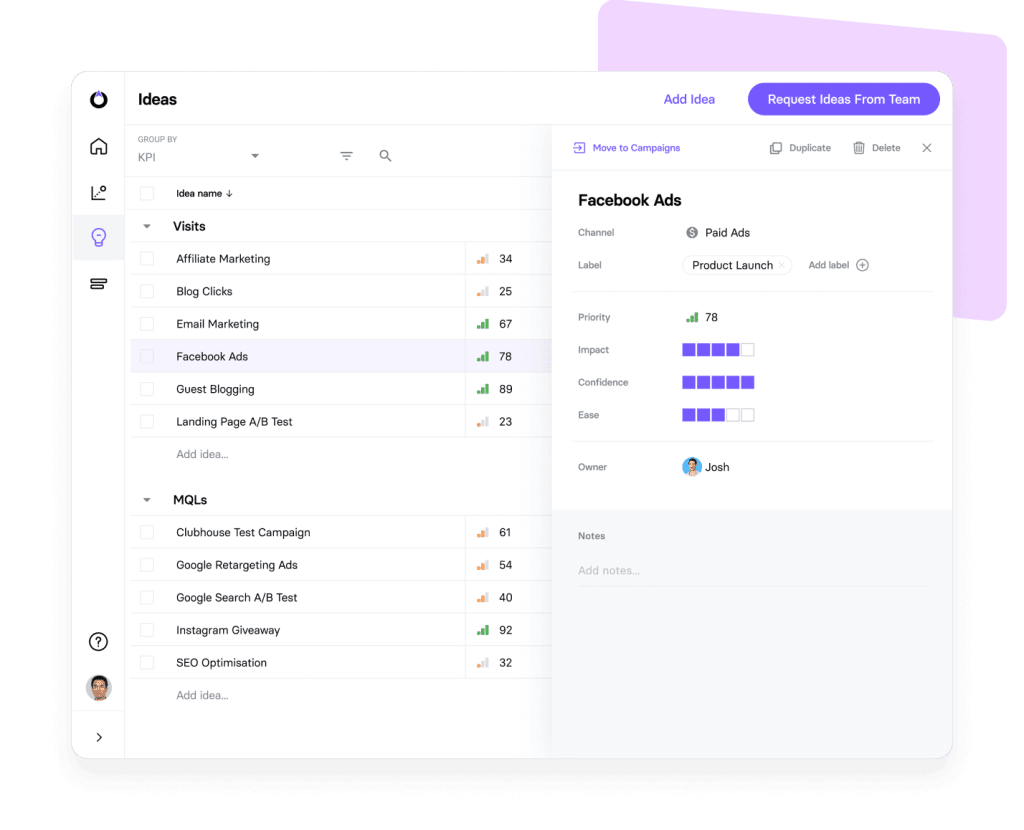
So you’re approving winning campaign briefs and prioritising them to focus your efforts on the marketing actions that have the strongest positive impact. At the opposite end of the spectrum, ideas that score particularly low (say 30 or under) are best forgotten, unless you think there’s real potential to improve results with drastic changes.
However, you’ll also find many campaign ideas fall just short of acceptable results (55-65) and it might be worth coming back to these at a later point to see if some tweaks can bump these strategies into winners.
#8: Stay on track with milestones
Another key benefit of forecasting is that you can break down expected performance, month by month, to see which targets you need to hit along the path to goal completion. In the image below, you can see one of our forecasts in TrueNorth and the platform also allows us to set “milestones” for each month. We can use these to adapt aspects of our campaign as we go and update the simulation to re-forecast and check all of the numbers add up.

This helps us to hit smaller targets every month and stay on track with our primary goals while remaining agile enough to respond to external factors. With milestones, we’re also able to see where performance deviates from predictions sooner and respond to changes faster. If we’re falling short of the simulation, we can shuffle resources and come up with a plan that will still achieve our goal in time. Likewise, if we’re over-performing during the first few months of a campaign, we can adjust our forecast to set higher targets and measure ongoing performance to see how it compares to both predictions.
Progressively, as we run more campaigns and gather more data, our forecasts become increasingly accurate so we’re able to set targets with greater confidence.
#9: Forecast & re-forecast regularly
As we’ve mentioned several times in this article, marketing forecasting is something you run on an ongoing basis. The first campaign simulation gives you an indication of whether a strategy is worth pursuing and helps you prioritise campaigns performatively. However, you want to re-forecast periodically (say, every three months) inputting historical data to recalculate results throughout the remainder of the campaign.
Once you input this data and update the simulation, you’ll often find results are higher or lower than the initial forecast – and this allows you to respond early. For example, you might want to redirect budget to overperforming campaigns to maximise ROI and, if necessary, analyse underperforming campaigns to improve results.
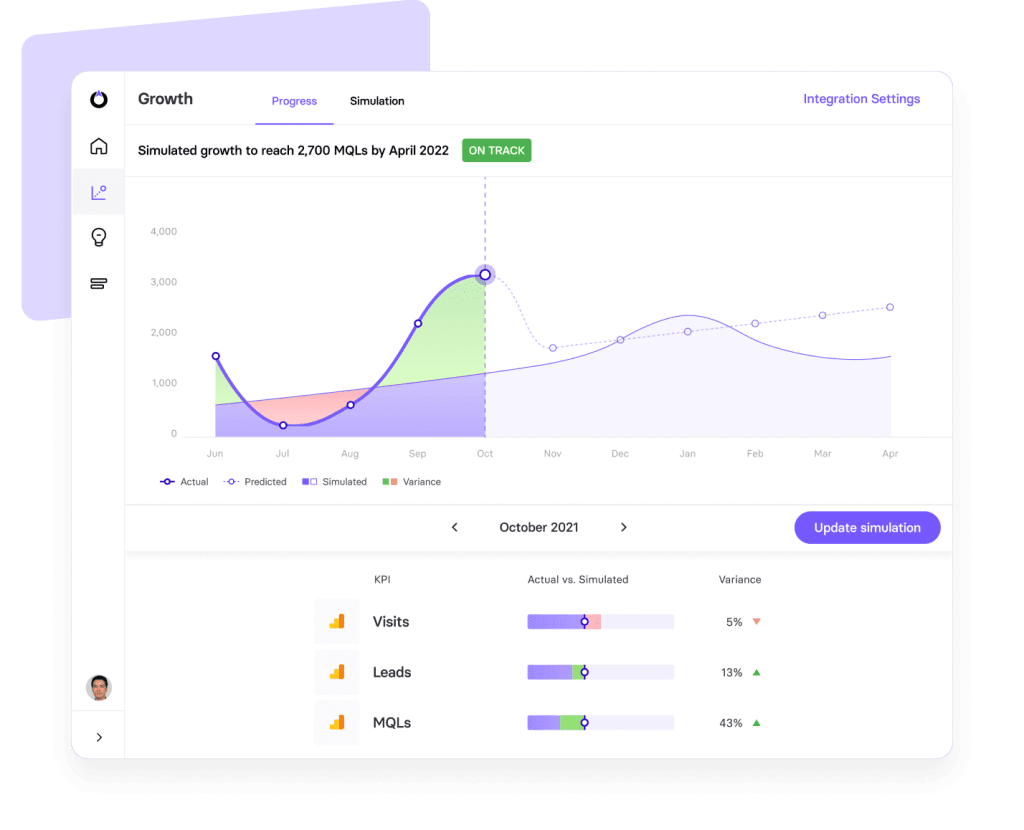
By running regular forecasts, you can stay on top of campaign performance and adapt to unexpected results faster. So you can take full advantage of your best campaigns sooner and deal with any performance challenges with plenty of time to get results back on track.
#10: Adapt budgets & targets to maximise ROI
Once your campaigns are running for 4-6+ months, you’ll start to see how effectively your budget is working for you across each strategy and channel. At this point, you want to start analysing performance to decide where spend needs reallocating to maximise ROI.
As Jonathan Gordon writes for McKinsey, “with budgets under increasing pressure, marketers must allocate every dollar with precision and purpose.”
“What companies need is an analytical, forward-looking approach that allocates marketing dollars to customer segments as well as products or geographies that have the highest growth potential rather than to those that have traditionally performed well.”
You don’t want to start messing with budgets too early – make sure you give campaigns enough time to gain traction and provide an accurate picture of performance. That said, once you’re confident certain campaigns are performing particularly well/poorly, you should redistribute your budget to spend more on the top-performers and pull spending on the underachievers.
You don’t have to abandon campaign ideas that fall short of expectations, but you’ll certainly want to reduce spend while testing/optimising to improve results.
Forecast your way to higher marketing ROI
With marketing forecasting, you can test campaign ideas before putting any budget on the line. By following the steps we’ve outlined in this article, you’ll see which campaign ideas are worth running with, know which campaign ideas to prioritise and put performance benchmarks in place to ensure your marketing objectives and goals are on track, every step of the way.
This goal-oriented, data-driven approach to marketing forecasting allows you to set and allocate budgets with confidence, knowing you’re able to optimise campaigns on the fly and readjust spend to invest more in your top-performing campaigns. Instead of running strategies in the dark, you gain the foresight to see what’s coming ahead and identify opportunities/challenges faster. This means you’re ready to respond to developments faster, whether this means optimising campaigns to bring performance back up to par or increasing budgets for profitable campaigns.




